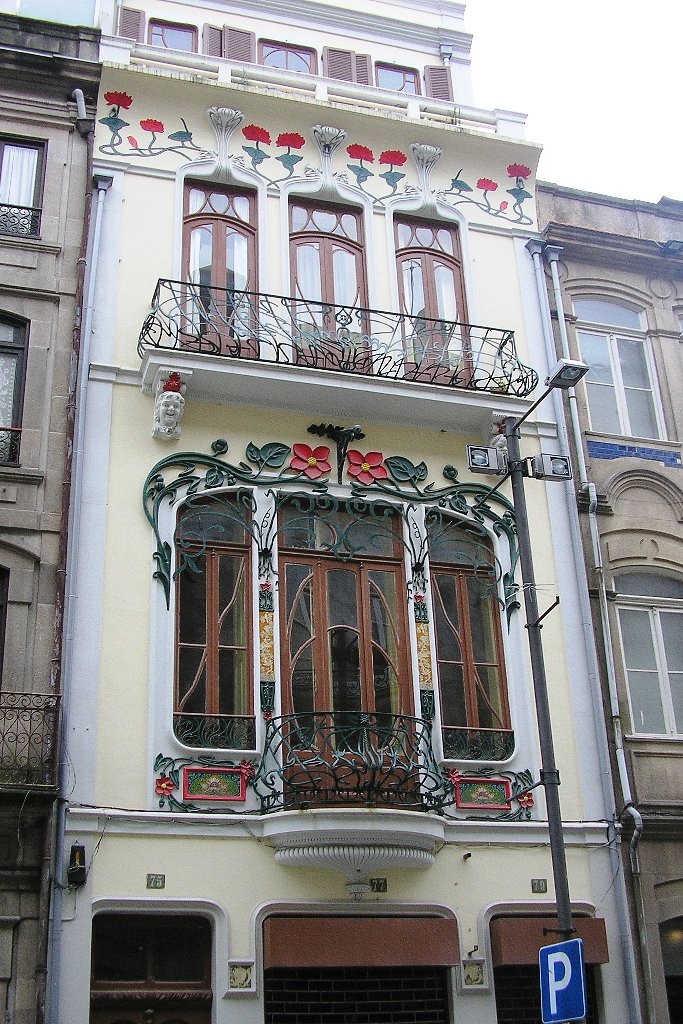#4635. Art Nouveau Floral Facade with Organic Motifs
Before us stands an outstanding example of Art Nouveau architecture — a narrow urban facade of a three-story building, richly decorated with floral motifs. The facade is painted in a light yellow color, creating a perfect background for the artistic elements.
The upper part of the facade is adorned with a frieze featuring decorative patterns of red flowers (presumably poppies or carnations) and white lilies, connected by flowing lines. Below the frieze are three tall windows with arched tops and wooden frames, fronted by a wrought iron balcony with an elegant ornament characteristic of the Art Nouveau style.
The central floor is particularly notable for its glazed bay window, framed by sculptural decor in the form of stylized plant forms. The curved lines of the metal window frames smoothly transition into decorative elements imitating stems and leaves. Above the windows are bright floral motifs in red. Under the bay window is a sculptural detail, likely a mascaron.
The ground floor has a more austere design with arched entrances. The entire facade represents a harmonious composition where organic forms of nature are transformed into architectural elements, which is a key feature of the Art Nouveau style of the early 20th century.
